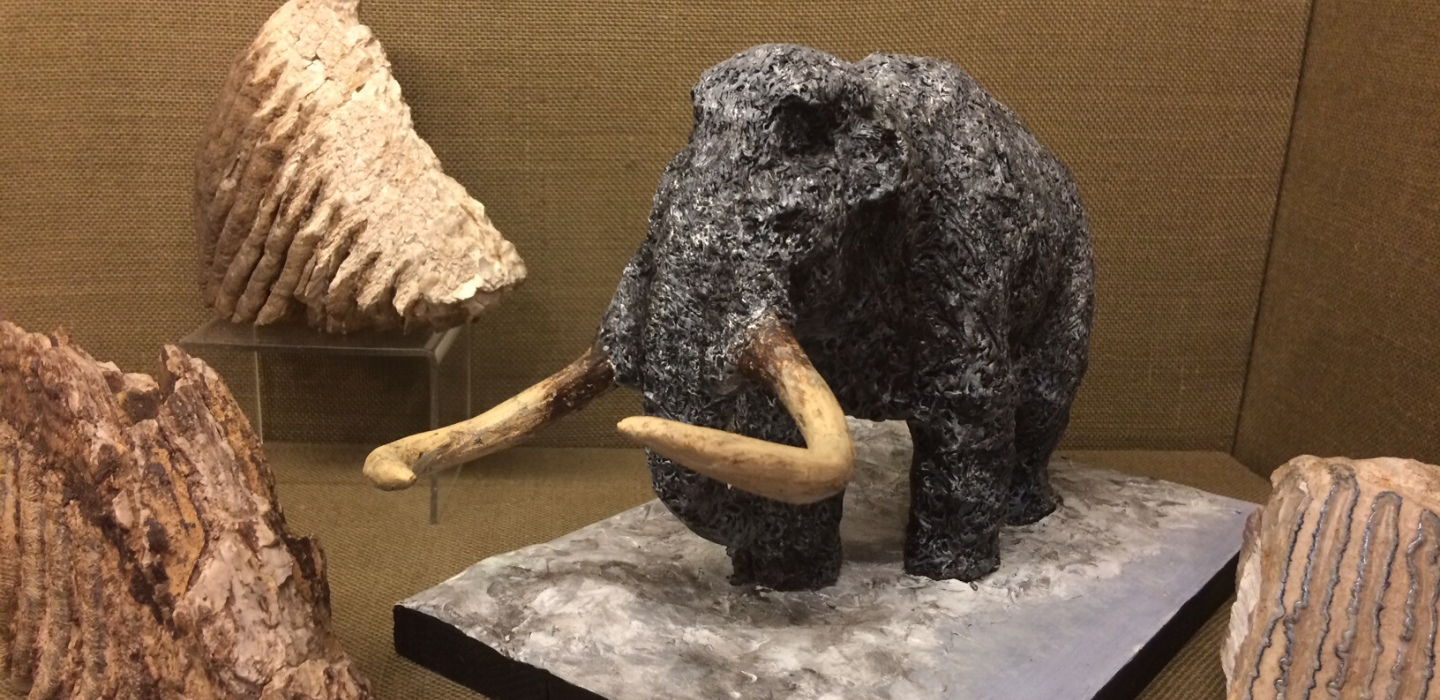Ancient Origins
The Ancient Origins Gallery displays objects from the Kingston area dating from prehistory to Anglo-Saxon times.
Archaeological Digs
From the 1960s through the 1980s Kingston Museum Curator Marion Hinton led several archaeological digs uncovering local sites, such as a late medieval pottery kiln and Neolithic and Bronze Age items. These important finds led to the establishment of the Kingston upon Thames Archaeological Society (KuTAS) in 1969. In the mid 1980s, the Museum of London excavated the undercroft of an inn built in the 1300s and the stone foundations of the old wooden Kingston Bridge. These remains are now housed on the riverside, near John Lewis.
Some of the oldest items on display in the museum include woolly mammoth teeth from the Ice Age and a hand axe made 250,000 years ago.
A Neolithic Island
In about 4,500 BCE, what is now Kingston town centre was an island. The Thames ran to the west, as it still does, and a second branch of the river ran from where the Hogsmill meets the Thames, through what is now the main shopping area, rejoining the Thames near the current Kingston Bridge. This channel later silted up and there is no trace of it today. Objects found in this second river, close to today’s Eden Street, include pottery, a human skull and deer antlers used as picks.
Bronze Age Weapons
From around 1,500 BC, the Thames was a major route for importing scarce metals like copper and tin from the West Country, Ireland and Brittany. Kingston may have been one of the Thames Valley centres for the production of bronze goods.
Some of the earliest material on display in the museum, dating from the Neolithic period and the slightly later Bronze Age, was discovered in the river. It includes stone axes and fragments of weapons such as bronze swords, spearheads and axes. Many of the swords seem to have been broken deliberately or had notches cut into their blades. Archaeologists think that people threw the weapons into the water as an offering to the river gods.
The Chessington Hoard
In 1998 metal detectorists made an exciting discovery on farmland at Chessington. They found four gold coins made during the Iron Age, in the early 1st century BCE. Two more gold coins were uncovered in Chessington the following year.
On the front of the coins is an image of the god Apollo’s head. On the back is a horse and a wheel, representing a chariot. The images are copied from a gold coin made during the time of Philip of Macedon in 350 BCE. People in northern France and Belgium made coins like these, and they were widely used on the Continent and in southern Britain.

